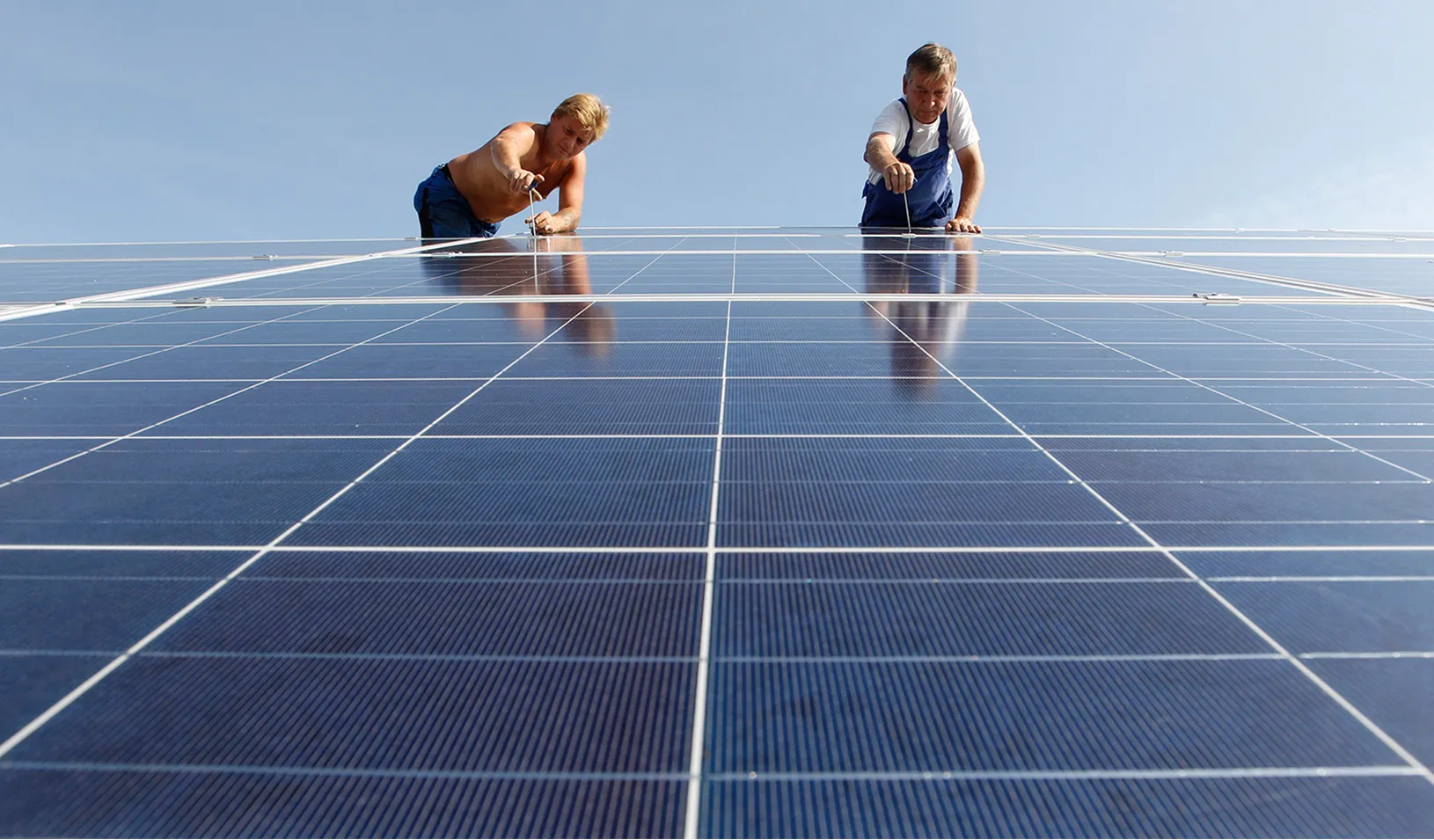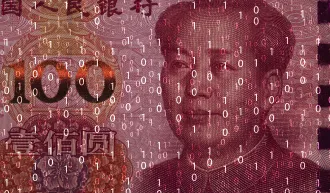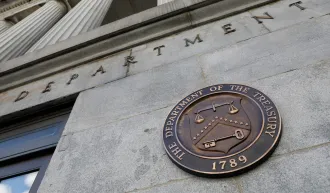Solar Power’s Bright Future
A conversation with Stefan Reichelstein on the economics of solar power.
June 06, 2012

Construction workers fix solar panels for a new solar power plant in Germany | REUTERS/Michaela Rehle
Nearly everyone thinks that generating electricity via solar power is good for the environment, but there’s much less agreement on whether it makes sense from an economic point of view. At what point will solar power be competitive with electricity generated by conventional, fossil-fuel plants, and how long will subsidies need to remain in place before the solar industry can stand on its own? Those are some of the questions addressed in “The Prospects for Cost-Competitive Solar PV Power,” a new working paper by Professor Stefan Reichelstein of Stanford GSB, and Michael Yorston, graduate student in the Department of Management Science and Engineering at Stanford. Their paper breaks new ground in studying the life-cycle cost of electricity generated by solar photovoltaic, paying particular attention to key factors such as location, public subsidies, and the long-term learning effects in manufacturing solar panels.
Here is an excerpt from our discussion with Professor Reichelstein:
Stanford GSB: Why did you decide to study the economics of solar photovoltaic power at this time?
Renewable energy and solar in particular remain rather controversial in the public debate about energy policy. Passions have been running high. What motivated me is the bewildering range of statements you have out there regarding the cost effectiveness of electricity based on solar PV. Given the range of opinions, I wanted to do my own analysis. I’m looking at it from the point of view of a business economist who is interested in measuring the life-cycle cost of this abundant energy source.
Your main conclusions?
Solar PV is not yet competitive with fossil fuel, like natural gas, from the perspective of a utility that can either build a new natural gas power plant or invest in solar installations.
For a commercial power user, say a business with plenty of rooftop space, the cost of generating your own electricity is now on par with what the business would need to pay in retail electricity prices. In that sense, grid parity has been achieved for commercial-scale installations. However, I need to add immediately that this is subject to two important qualifiers. The facility has to be in a favorable location, such as the Southwestern United States, and secondly the business must be able to take advantage of the current federal tax subsidies.
Concerning the future, and this may sound like a pun, the future of solar PV looks rather bright. The industry has consistently been able to lower the cost of solar panels. If this trend can be maintained for the next 10 years, and if subsidies are continued for that period, there is a real prospect for solar to become cost competitive on its own (that is, without a subsidy), at least for commercial installations. Utility-scale installations will take longer to become competitive; possibly 15 years, though it obviously becomes murkier to make projections that far into the future.
What happens if subsidies disappear or are sharply reduced?
The current federal tax subsidies come out of the Economic Stabilization Act of 2008 and will be in place until 2016 unless Congress changes the rules. The solar panel manufacturing industry has been on a remarkably steady learning curve for several decades now, which has pushed down the systems price of solar panels at a dramatic rate. However, this learning curve seems very much dependent upon production volume. So, if the tax subsidies were to cease, new production volume would probably be lower, and the effect of that would be to slow down the rate of cost improvements.
If the current preferential tax treatment is kept in place for about the next 10 years, and the observed learning curve holds up, we are projecting that, at that point in time, solar-generated electricity would be competitive with that generated from fossil-fuel power plants.
Why will it take longer for utility-scale installations to stand on their own, than for commercial-scale installations?
You have different benchmarks. For commercial-scale — and also for residential — solar, the benchmark is the retail price of electricity, while for utility-scale projects it is the wholesale price. The difference between the two is the cost of transmission, distribution, and administration; that is, everything that gets you from generating the power to delivering it to your customers.
What assumptions are you making about the cost of generating electricity from fossil fuels?
We believe that natural gas, as opposed to coal, is the most important fossil fuel competitor to renewable energy. In our cost projections, we have assumed a modern combined-cycle gas power plant with the price of natural gas given by the historical average observed in the United States over the past 10 years.
Are you factoring in the price of oil?
No. Oil is not used widely to generate electricity. The price of oil would be relevant to our analysis only to the extent that you want to compare gasoline-powered cars against electric vehicles.
Isn’t it true that panel costs have dropped sharply because of excess capacity in the industry?
Yes, solar panel producers are waiting for demand to catch up with current industry capacity. Until that happens, the panel producers will continue to hurt in terms of profits. In the last year, panel price came down about 40%, a drop that can’t be attributed to the learning curve alone. Without the capacity glut caused by new entrants, but taking into account the historic learning curve, we would have predicted a drop in prices of about 20% in 2011. Without the excess capacity in the industry, our estimate of the current life-cycle cost of electricity generated by solar PV would have been about 15% higher than it was.
In large part, solar PV panels are semiconductors; does Moore’s Law apply to them as well?
Yes, in a sense. Moore’s Law speaks to the rate at which the number of transistors doubles on an integrated circuit. In the context of solar panels, it appears that whenever the total cumulative amount of panels produced doubles, the unit cost decreases by 20%.
What is driving the economics of solar power?
A mix of federal tax incentives has been especially helpful to commercial-scale installations, and even to home installations. We’ve also seen dramatic growth in recent years of utility-scale installations despite their current cost disadvantage relative to fossil fuel power plants. The reason appears to be the additional subsidy mechanisms at the state and local level. Here in California, Assembly Bill 32 (a 2006 law that set goals for reducing greenhouse gas emissions) and the state’s “renewable portfolio standard,” which requires that 33% of California’s electricity come from renewable resources by 2020, seem to be driving demand. Other countries (such as Germany) have different subsidy mechanisms that yield similar effects.
For media inquiries, visit the Newsroom.
Explore More

Explainer: What is Carbon Reporting?

New Incentives Could Save the Colorado River — and Other Threatened Waterways



